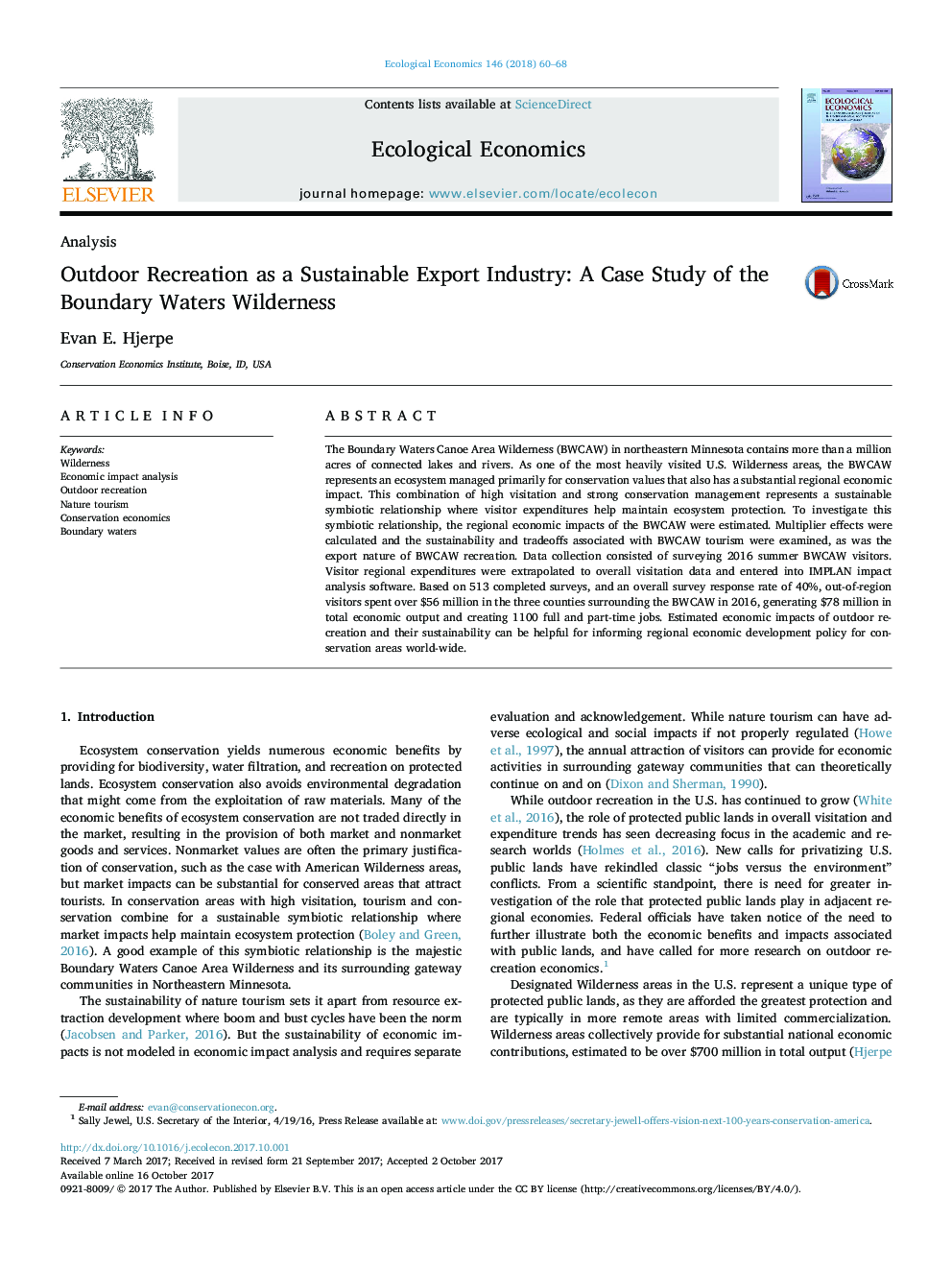| Article ID | Journal | Published Year | Pages | File Type |
|---|---|---|---|---|
| 5048489 | Ecological Economics | 2018 | 9 Pages |
The Boundary Waters Canoe Area Wilderness (BWCAW) in northeastern Minnesota contains more than a million acres of connected lakes and rivers. As one of the most heavily visited U.S. Wilderness areas, the BWCAW represents an ecosystem managed primarily for conservation values that also has a substantial regional economic impact. This combination of high visitation and strong conservation management represents a sustainable symbiotic relationship where visitor expenditures help maintain ecosystem protection. To investigate this symbiotic relationship, the regional economic impacts of the BWCAW were estimated. Multiplier effects were calculated and the sustainability and tradeoffs associated with BWCAW tourism were examined, as was the export nature of BWCAW recreation. Data collection consisted of surveying 2016 summer BWCAW visitors. Visitor regional expenditures were extrapolated to overall visitation data and entered into IMPLAN impact analysis software. Based on 513 completed surveys, and an overall survey response rate of 40%, out-of-region visitors spent over $56 million in the three counties surrounding the BWCAW in 2016, generating $78 million in total economic output and creating 1100 full and part-time jobs. Estimated economic impacts of outdoor recreation and their sustainability can be helpful for informing regional economic development policy for conservation areas world-wide.
